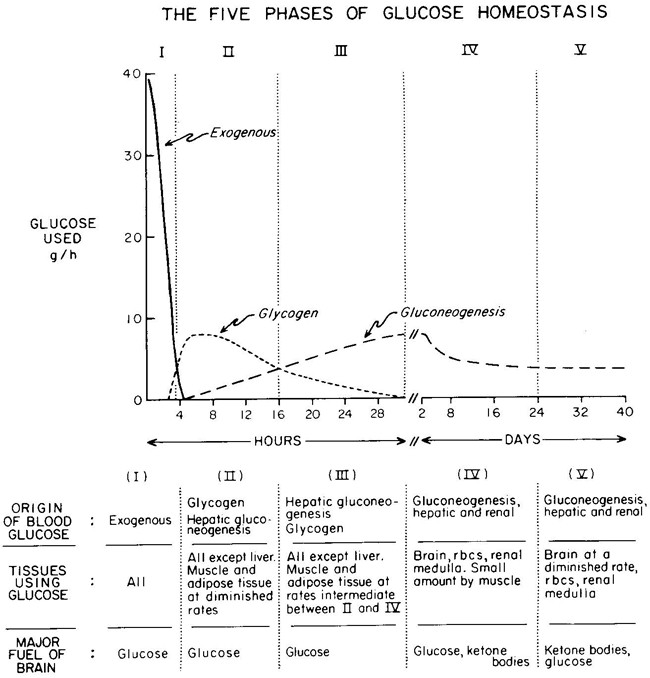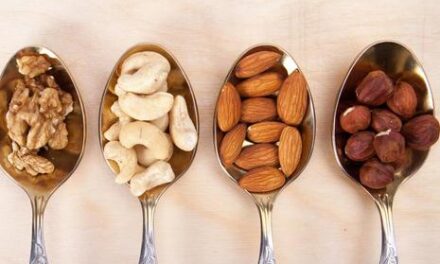Fasting 101

What if someone told you that there was a way to decrease diseases, including diabetes and cancer, while increasing the number of years you have to live, all by simply changing what you eat for a few days? You’d probably think it was too good to be true, but surprisingly this simple method has been around since the earliest single-celled organisms.
We’re talking about fasting.
There’s a lot of misconception around what “fasting” actually means, though, so we’ll try to clear it up here:
What Is Fasting?
The common definition of fasting is abstinence from all or some kinds of food or drink, but the biological definition is actually the switch from burning glucose (sugar) for energy to burning fatty acids and ketones, typically induced by mild stress to the body.
True biological fasting occurs about 48 hours after the last meal, for reasons that will be explained below. This is important to note because many of the benefits of a fast require the body to reach a biological fasting state. So what are these benefits?
It turns out that fasting induces a protective response against future stressors, and fasting for a few days in a row actually triggers the body to reduce inflammation and remove and replace damaged and dysfunctional cells. In mice, we see that they live longer, healthier lives if their diets are restricted or if they are fasting.1
The incredible part is that this mechanism, which is to say this process, is conserved. Decades of research have been dedicated to this one mechanism: the nutrient-sensing pathways. We find that these pathways are what scientists call “Conserved.” This means that the pathways are similar in various animal models. Including humans.1,2 But how is this happening? And why would this mechanism be present across various forms of life? The answer is actually quite simple, but the rationale is a little complicated.
What happens during fasting?
When we stop eating food, the body starts to utilize what it already has to fuel itself.3,4 The body can pull from three different kinds of materials to create energy:
- protein (muscle mass)
- carbohydrates (glycogen storage)
- lipid (fat mass)
All three of these materials provide energy for the body, but at different rates and through different pathways. The body only has a small amount of glycogen (essentially stored sugar) that it can pull from. Once this has been depleted, it moves right on over to protein and lipid. However, it is more efficient to use lipid (or fat mass) than protein because there is a lot more energy in fat mass than in muscle mass. So, for the most part, the body will begin to burn fat once all of the carbohydrates have been depleted. At this moment when the body is burning fat, we believe the body is truly in the fasting state; this is just around 48 hours after the last meal. The way we see the body burning fat is actually through the unique molecules called ketone bodies. As fat burning increases, so do ketone bodies. We call this state “ketosis”. If the body is left in this state for too long, which is to say if the body continues to not have nutrition coming in, then the body will begin to starve. If left in starvation, then the body will eventually become malnourished.
Taken from: Cahill GF Jr. Fuel metabolism in starvation. Annu Rev Nutr. 2006;26:1-22.
The Types of Fasting
So how do you fast? Well, that depends. There are multiple forms of fasting! We will get into the nitty-gritty on these in another article, but there is the quick and easy description for each type:
Time-restricted feeding (TRF) –
The daily pattern of eating during a window of 8hrs or less5 (for example, not eating anything after 8 pm until lunch the following day).
Intermittent fasting (IF) –
Extended periods of time (16-48 hrs) with very little or no energy intake in tangent to intervals of normal eating5,6 – this is what most people think of as fasting, but the body generally does not reach true biological fasting in this version.
Periodic fasting (PF) –
2 to 21+ days broken up into periods of fasting or fasting-mimicking diets5 – this is true biological fasting.
* Please note that juice cleanses do not fit in any of these categories, and there really is no such thing as a “juice fast”.
Benefits of Fasting
So why should someone consider a fast? Because it turns out that there are a number of benefits to fasting, and they’re wide-ranging!
In mice models, we see that the benefits of fasting include2:
- Increased lifespan
- Decreased diabetes
- Decreased cancer
- Increased cognitive functioning (they get smarter vs. their non-fasting peers)
In humans, the benefits are a little different2,7:
- Maintain healthy levels of metabolic markers including glucose, blood pressure, insulin, c-reactive protein, insulin-like growth factor 1
- Weight loss
- Visceral fat loss
- Improved cognitive performance
Who Can Fast
But is fasting for everyone? Well, technically the answer is no. Although fasting comes with many benefits, it is not safe for children, elderly or frail individuals, and those that are malnourished. It is also not always safe for people with difficulty regulating their blood sugar, such as diabetics or people with glycogen storage diseases. Ultimately, it is up to your medical professional to determine if it is appropriate for you to be on a fast.
Is there a way to Fast without Fasting?
There actually is a diet where you can get all the benefits of fasting without all the hassle and risk of fasting. It is called a Fasting Mimicking Diet and the incredible researchers at the University of Southern California, under the guidance of Valter Longo Ph.D., developed this protocol and tested it in a clinical trial. What they ultimately found after the 100 accepted participants went on this fasting-mimicking diet was that they lost weight, preserved their muscle mass, and maintained healthy levels of metabolic markers (glucose, triglycerides, cholesterol, blood pressure, c-reactive protein). This protocol consisted of five days of a scientifically determined ratio of micro- and macronutrients that resulted in the mimicking of the physiology of fasting while eating! This diet was truly food that the body did not sense – it did not activate the nutrient-sensing pathways – but it did stimulate fasting.






